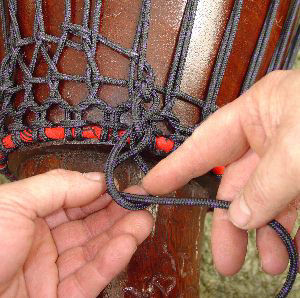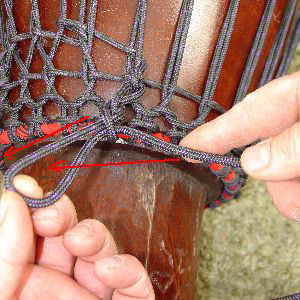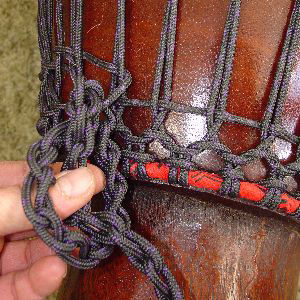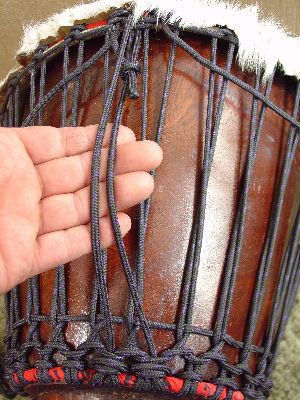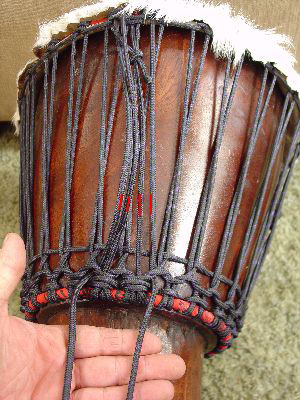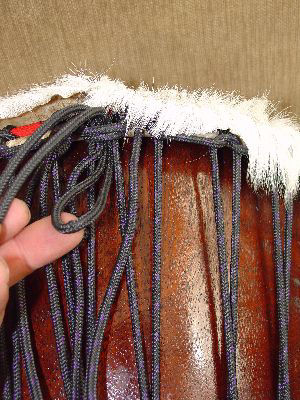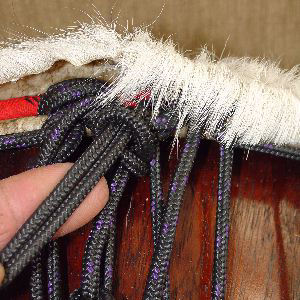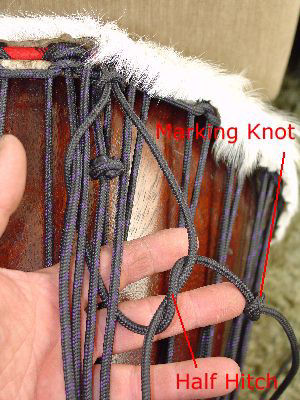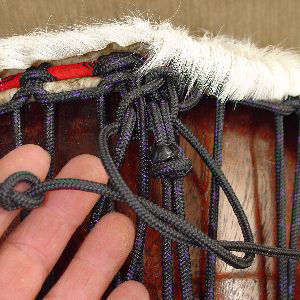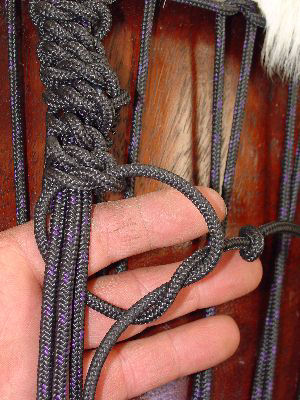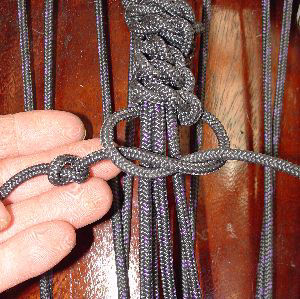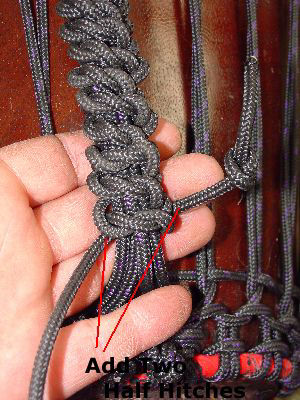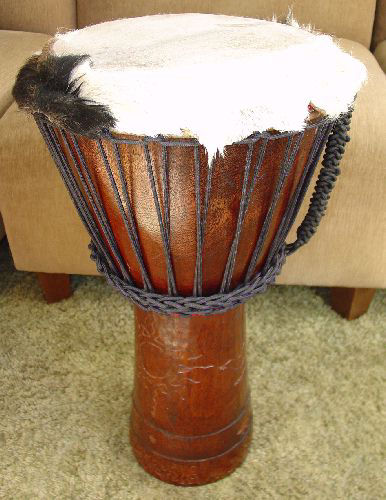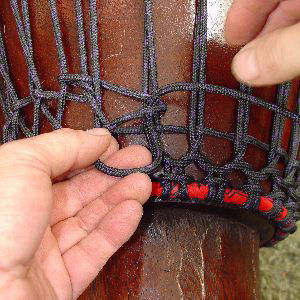
Chain Stitch Your Extra Rope
Here is where we finished the drum. I never tie the diamond row off anymore. If you leave a weave knot threaded and snugged down it won't come loose. To begin the chain stitch with your extra rope, first make a twist to form a loop.
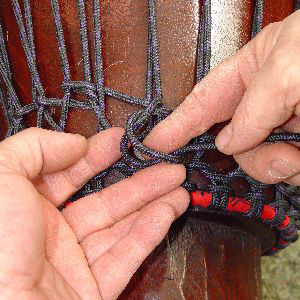
Push a Loop Through
Now push through the twisted loop, another loop of rope. With your left hand you will grab the side of the loop toward the top of your drum and pull that at the same time working the loop snug up to your drum.
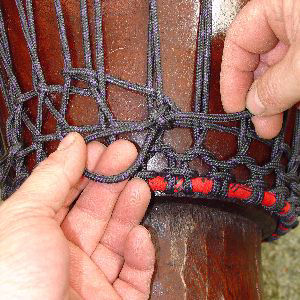
Tighten First loop
The twisted loop is now tight to the drum and the loop you pushed through is now the loop. Look at my hand positions. My left index and thumb grasp the uphill side of the rope, I keep tension away from the drum body and snug the loop up by pulling slightly away from the drum. My left center finger can enlarge the loop by closing toward my palm, spreading the loop. My right hand is the "regulator", It can shrink the loop if it gets to big by pulling backward.
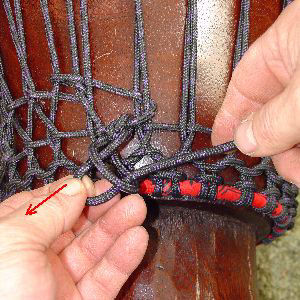
Push Another loop Through
I have just released the loop with my left hand and as I pushed the rope toward the loop with my right, the left reached through and grabbed the next loop on the uphill side and pulled back, tightening the next loop
